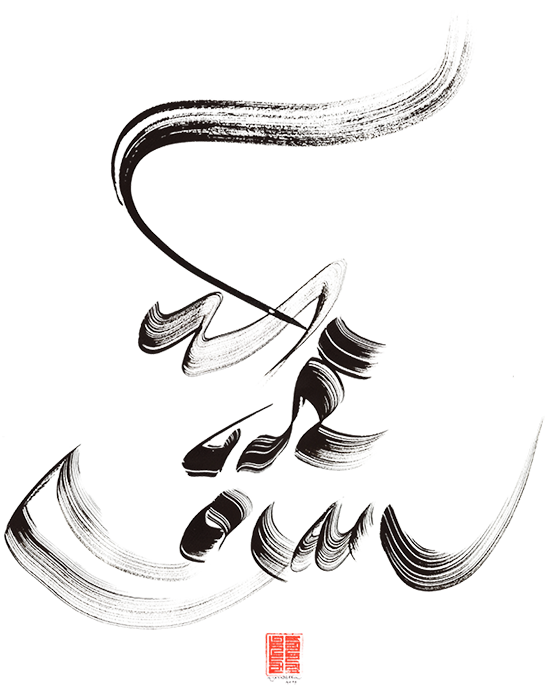


Jamyang’s calligraphy is a harmonious dance of Buddhist images and elements with his passion for Tibetan language. His rich nature of art encompassing Buddha’s Body, Speech and Mind all in one inspired Lama Zopa Rinpoche to call it “Dharma Art”.
Boldly experimenting with various mediums and styles, Jamyang's work is a constantly evolving art where contemporary style and technique meets the rich cultural heritage of Buddhism and the Tibetan language.
With the constant effort of the greatest Buddhist masters of our time led by His Holiness the 14th Dalai Lama Tenzing Gyatso, Buddhist science and Buddhist philosophy has found international acceptance as the ethics of the new millennium. Tibetan civilization has been molded by the essence of this great religion and adopted as Tibetan values. It is important for us, Tibetans, to preserve and promote these values as our universal responsibility, more so now that many of our own brothers and sisters are scattered all over the world in complete alien environment.
Tibetan calligraphy is much less well-known than Islamic, Persian and Chinese calligraphy and this beautiful art form is near extinction. My task as an artist and Tibetan is to protect and transfer priceless Tibetan values through calligraphy and encourage others to study and preserve this dying tradition.
I have focused my calligraphy in u-med form to exhibit free and various styles representing the depth, flexibility and artistic flavor of the Tibetan calligraphy that no computer can capture and standardize.
I have also used brush and acrylic paints on canvases with the hope that many younger artists will wish to continue to experiment with this medium to develop new artistic forms of expression of our values. This work represents my attempt to bridge ancient Tibetan traditions and modern arts in order to express a contemporary Tibetan identity.
- Jamyang Dorjee Chakrishar, Artist.
